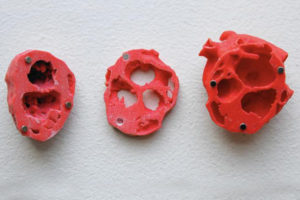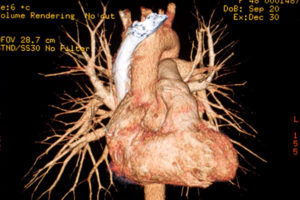
Research opportunities lead to better patient care
Combine care with research opportunities.
Explore provider openings
Why? It’s one word, but it might be the most important question we ask, because the answer can open the door to endless possibilities.
Why? It’s the question a group of OSF HealthCare Mission Partners in Peoria, Illinois asked themselves during their recent review of a medical journal. Data showed that patients born with coarctation of the aorta – narrowing of the largest heart artery – die at a younger age than other patients.
“But it didn’t say why they die at a younger age,” said Kristi Ryan, APRN, who works in pediatric and congenital cardiology at OSF HealthCare Children’s Hospital of Illinois. “We started talking about why. We thought maybe it’s because those patients have undiagnosed high blood pressure. So we started looking into that. Why is high blood pressure sometimes undiagnosed? We might see a patient once a year for their physical and get one blood pressure test, but is that a good way to evaluate for high blood pressure?”
Determining the answer will require research. Kristi and her colleagues have proposed a formal project to an internal review board (IRB). If approved, they’ll receive support to proceed.
Vast resources aide research
OSF HealthCare encourages its medical Mission Partners to participate in research. More than 600 research projects are currently active across the Ministry.

One unique resource for research is the Jump Trading Simulation & Education Center. Jump is a collaboration between OSF HealthCare Saint Francis Medical Center and the University of Illinois College of Medicine Peoria, on the OSF Saint Francis campus in Downtown Peoria.
“Jump brings research to a whole new level. We really have at our fingertips the kind of resources some can only dream about having,” Kristi said.
One of those dreams that’s real at Jump is virtual reality technology. Kristi is currently working on creating patient hearts within virtual reality.
Using CT scans and MRI, a three-dimensional model of the heart is created. By placing that model into virtual reality, the care team not only can determine precisely where and how to place a stent, but actually show the patient what will happen during the procedure.
Kristi cited the case of a young, adult male patient with a pulmonary artery aneurysm in an unusual location.
“In this case, showing him his heart in virtual reality also helped him better understand why he shouldn’t play contact sports. It was very beneficial,” she said.
A one-of-a-kind case
Early in her nursing career, while working in the pediatric intensive care unit at OSF Children’s Hospital, Kristi was drawn to children with heart conditions. Today, she works with adults who have congenital heart defects and frequently finds herself caring for patients she first treated as children.
“Outcomes have become such that 95% of people born with congenital heart defects live to be adults, so it’s a sub-specialty,” Kristi said.
 In fact, the adult congenital heart program at OSF HealthCare is the first in Illinois to be accredited through the Adult Congenital Heart Association.
In fact, the adult congenital heart program at OSF HealthCare is the first in Illinois to be accredited through the Adult Congenital Heart Association.
Research opportunities abound. Last year, Kristi teamed with two OSF Children’s Hospital physicians, Dr. Ty Hasselman from pediatric cardiology and Dr. Michael Leonardi from maternal-fetal medicine.
Their case involved a young pregnant woman whose heart has only one functional ventricle. The woman’s situation was further complicated by a condition that causes her to lose protein.
“The risk of fetal loss was very high,” Kristi said. “We could find no literature reporting anyone having a successful delivery by a mother with this defect.”
The woman’s successful childbirth led to Kristi and Drs. Hasselman and Leonardi co-authoring an article published last April in the journal Cardiology In The Young.
It also led to a new project: a more expansive, retrospective review of congenital heart patients who have had pregnancies. Kristi hopes the research will provide more accurate data regarding the risks of such pregnancies and better equip providers to treat those patients.
Research is ‘a professional responsibility’
Most of Kristi’s job involves directly caring for her patients. She estimated only about 5% to 10% of her time is spent on research, but she views it as “a professional responsibility.”
“To be a well-rounded practitioner, research is something you should participate in on some level,” Kristi said. “No matter how big an institution is, it takes everyone who is working with the patient population to improve their outcomes.”